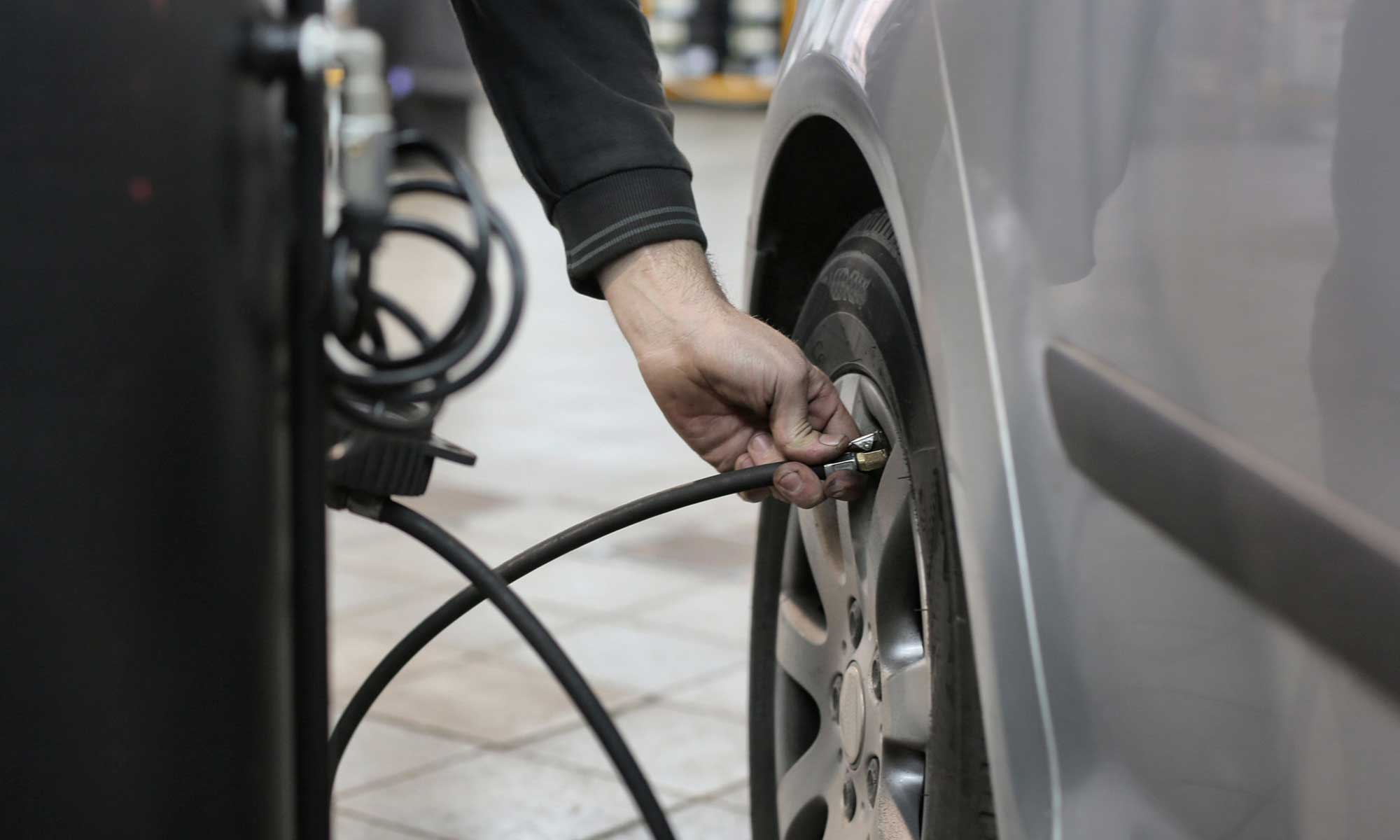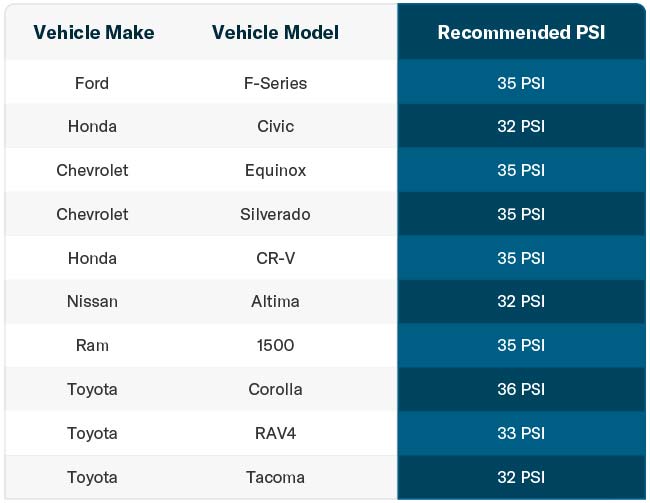Get this deal! Call now.
Speak with a vehicle protection plan specialist and get $300 off any new contract instantly.
Call 866-678-4172
or scan the code below


Every vehicle owner has heard the term ‘PSI’ at some point, but besides knowing it has something to do with their tires, many aren’t sure what it actually means. In truth, it’s super important that you find out because having your vehicle’s tires at the correct PSI can help you avoid gas stations by helping to increase your fuel economy by up to 3%. And just like having your tires rotated, it’s also great for improving your vehicle’s safety out on the road.
As an auto shop owner, being asked, “what does PSI mean in cars?” is something that I hear all too often. Often enough, that question is usually followed by, “so what PSI should my tires be?”. They’re both great questions, and I’ll do my best to answer them here.
First things first, PSI stands for pounds per square inch. Simply put, this is the unit used to measure air pressure within your tire. You can find an accurate reading of what PSI your tires are right now using a tire pressure gauge, which you can pick up for around $20.
Your vehicle’s manufacturer will set a recommended PSI level, which is usually found somewhere in your owner’s manual, or on the door jamb of your driver-side door. On average, this tends to be somewhere around 35 PSI, measured when your tires are cold (i.e., when you haven’t driven at high speeds recently). Whatever PSI your vehicle requires, you should try to keep it at this particular pressure for optimum performance.
Whether it’s too low or too high, incorrect tire pressure can impact both ownership cost and safety. Your manufacturer recommends a specific PSI for a reason, after all.
Underinflated tires cause quite a long list of issues, including:
Overinflated tires aren’t quite as bad but still create problems such as:
Once you’ve found the recommended PSI for your vehicle, you should check the pressure of each of your tires around once a week (or at least once a month) and before every long road trip. If it looks like you have low tire pressure, top them up to the recommended PSI accordingly. If they’re too high, let a little air out until they’re just right.
It is also possible that your tires themselves have a PSI number molded into their sidewall, but feel free to ignore it. This is the number needed to meet the tire’s maximum load-carrying capacity—not what’s suitable for your vehicle.
It’s worth noting that your vehicle’s manufacturer may recommend a different PSI for the front and rear tires. They could also give you numbers meant for heavier loads or long-distance driving. So take all these things into account when filling up on air.
Below you can find the manufacturer-recommended PSI levels of some of America’s most popular vehicles. Just remember that these numbers can change between year models.
Use the table below as a rough guide, but always check your owner’s manual or driver’s door sticker to get the exact numbers:

The answer to this question ultimately depends on your vehicle, but for cars (rather than SUVs and pickups), you can bet it’ll be somewhere between 30 and 35 psi. The best place to find the exact number that your manufacturer recommends will be in your owner’s manual or on the jamb of your driver’s side door. It could also be somewhere inside the fuel flap, on the glove box door, or under your trunk lid for older cars.
While anything over your manufacturer’s recommended maximum PSI is too much, tires are better at handling overinflation than underinflation. Repeatedly overinflating tires leads to poorer handling and increased wear at the center of your tire’s tread, so you should always be careful not to fill them more than you’re supposed to. While you might think more air is better, there are no benefits to doing so.
Technically, any PSI that isn’t your manufacturer’s recommended amount affects the safety of your vehicle, but it’s underinflation that poses the most problems. An underinflated tire’s sidewalls flex excessively, bringing more rubber into contact with the road surface. This makes it much more difficult to turn and causes the walls of the tire to deteriorate. Tire walls are naturally much thinner than the tread, so it doesn’t take long for them to wear through completely. If this kind of tire failure happens suddenly when you’re out on the road, it could cause a fatal accident.
Try as you might to keep your PSI at the correct pressure level; you can never totally avoid the risk of tire punctures and blowouts. Most extended warranty providers exclude your tires as part of a bumper-to-bumper warranty, but Endurance isn’t one of them. Not only does every Endurance coverage plan give you 24/7 roadside assistance, substitute transport, and trip-interruption costs as standard, but you also get a year free of Endurance Elite Benefits—which include bonus perks tire repairs and replacements.
As the country’s most comprehensive vehicle protection program, EnduranceAdvantage™ also covers $3,500 in general maintenance costs per year. From alignment checks to tire rotations, just take your vehicle to the nearest ASE-certified auto shop, show them proof of your Endurance membership, and we’ll take care of the rest. It’s a cost-effective way to keep your tires in top condition and make sure you get the most gas mileage for your money.
If you’d like to know more about our extended warranties, don’t hesitate to get in touch. Fill in your details online now for a free no-obligation quote, or head back to our Learning Center for information, advice, and other useful articles.

We're here to make sure you get the most comprehensive EV protection. That's why we've partnered with Xcelerate Auto to offer you transparent and dependable Tesla coverage.
Want us to contact you about XCare coverage for your Tesla?



Call for $300 off any new plan!
By clicking the button, you consent to Endurance using automated technology to call, email, and text you using the contact info above, including your wireless number, if provided, regarding auto protection or, in California, mechanical breakdown insurance. You also agree to the Endurance Privacy Policy and Terms and Conditions. Consent is not a condition of purchase, and you can withdraw consent at any time. Message and data rates may apply.
Speak with a vehicle protection plan specialist and get $300 off any new contract instantly.
Call 866-678-4172
or scan the code below



Simply fill out the information below and we will follow up fast with your free no-obligation quote.
By clicking the button, you consent to Endurance using automated technology to call, email, and text you using the contact info above, including your wireless number, if provided, regarding auto protection or, in California, mechanical breakdown insurance. You also agree to the Endurance Privacy Policy and Terms and Conditions. Consent is not a condition of purchase, and you can withdraw consent at any time. Message and data rates may apply.

To speak to a vehicle protection plan specialist and save $300
Scan the code below
Since opening her ASE Certified repair shop in 1979, Ayers Automotive Repairs, Nikki has devoted much of her professional life to providing dependable, trustworthy auto repair services in her local community. Her team of certified technicians has helped thousands of car owners for over 40 years by offering various services from general repairs to handicapped vehicles.